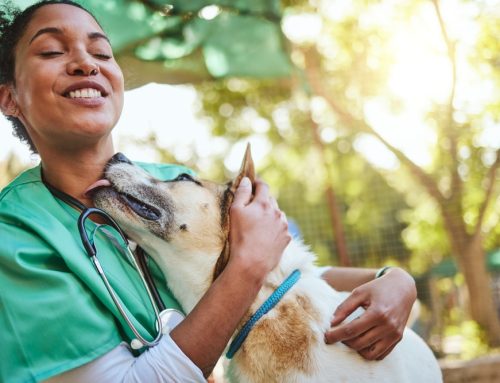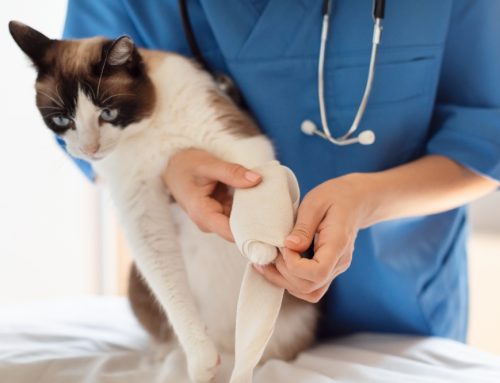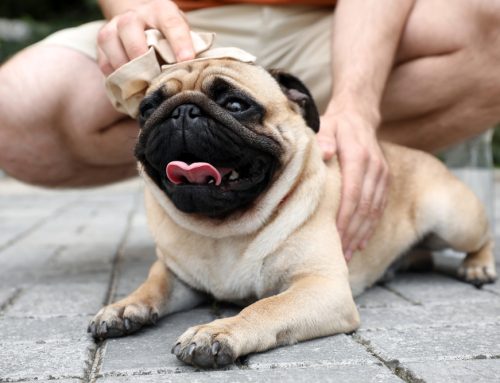As a responsible pet owner, you do everything you can to care for your pet’s health. But one important aspect of your furry pal’s health can go unnoticed—their dental health, which is essential for your pet’s overall well-being. Pets need routine dental care or they can suffer severe oral pain and infection. February is National Pet Dental Health Month, and our team at Lytle Veterinary Clinic wants to help you learn how to protect your pet from periodontal disease. To support your pet’s optimal oral health, follow our five tips.
#1: Understand the importance of pet dental health
Nearly 70% of pets have some form of dental disease by age 3, which can have negative consequences for their overall health, extending far beyond bad breath. When your pet eats, bacteria in their mouth combine with food particles to form a sticky film (i.e., plaque) on their teeth. If the plaque is not removed within a few days, the substance hardens into cement-like tartar, trapping bacteria in and around the gumline. Dental disease occurs when the bacteria begin damaging a tooth’s supporting structures, and your pet experiences pain, infection, and inflammation, and ultimately, bone and tooth loss. In severe cases, bacteria enter the bloodstream and permanently damage a pet’s kidneys, liver, and heart. If left untreated, dental disease can become severe and require costly professional treatment.
#2: Examine your pet’s mouth often
Check your pet’s mouth once per week to ensure their gums look pink and healthy, with few tartar accumulation signs. In addition, ensure your pet has no loose or broken teeth. Monitor your pet for these periodontal disease signs:
- Swollen, red gums
- Foul breath
- Yellow or brown tartar accumulation on the teeth
- Loose or missing teeth
- Sharp, jagged edges on a tooth, indicating a fracture
- Discomfort when eating
- Pawing at the face or mouth
- Blood-tinged drool
- Lumps or bumps in or around the mouth
- Decreased appetite, leading to weight loss
- Chewing on one side of the mouth
Unfortunately, you may not always be able to see your furry pal’s dental disease signs. Many pets do not show dental disease signs until their condition is severe and causing significant pain. Pets are excellent at hiding early-stage disease, which makes regularly examining your pet’s mouth all the more important.
#3: Brush your pet’s teeth daily
Twice daily toothbrushing is the gold standard, but brushing your pet’s teeth a few times per week can still help battle plaque and tartar buildup. Help your pet adjust to having their teeth brushed by using a pet-safe toothpaste. Dab a bit of toothpaste on your finger and spread it around on your pet’s teeth without using a toothbrush. Let your pet get used to the toothpaste’s feel and taste, and then apply a small amount to the toothbrush. Next, gradually place the toothbrush inside your pet’s mouth and brush their teeth and gums gently, allowing frequent breaks, and providing them with plenty of tasty treats and praise.
#4: Provide appropriate dental chews for your pet
Dental chews are beneficial for pets, but some are better than others. Avoid solid antlers, tough plastic bones, and sticks that can fracture your pet’s teeth. Soft chews may not last as long, but they’re safer for your pet. When choosing dental chews for your pet, consider the following key factors:
- Texture and design — Look for dental chews with a textured surface, such as ridges or nubs, as they can help remove plaque and tartar effectively. Also, look for designs that promote extended chewing, as the chewing motion stimulates saliva production. Saliva contains natural enzymes that aid in breaking down bacteria and maintaining oral health.
- Veterinary Oral Health Council (VOHC) approval — Choose dental chews with the VOHC seal of acceptance because these products meet specific standards. Products that bear the VOHC seal have been proven to slow plaque and tartar accumulation, preventing dental disease.
#5: Schedule regular dental exams for your pet

Regular professional dental cleanings are necessary to assess your pet’s oral health, address complications, and thoroughly clean your pet’s teeth above and below the gumline. Most pets need a professional dental cleaning once per year, but if you have a high-risk pet, such as a toy-breed dog or a flat-faced (i.e., brachycephalic) pet, they may require more frequent visits.
Your pet’s dental health is extremely important to their overall well-being. Contact our Lytle Veterinary Clinic to schedule your furry pal’s professional veterinary dental cleaning.







Leave A Comment